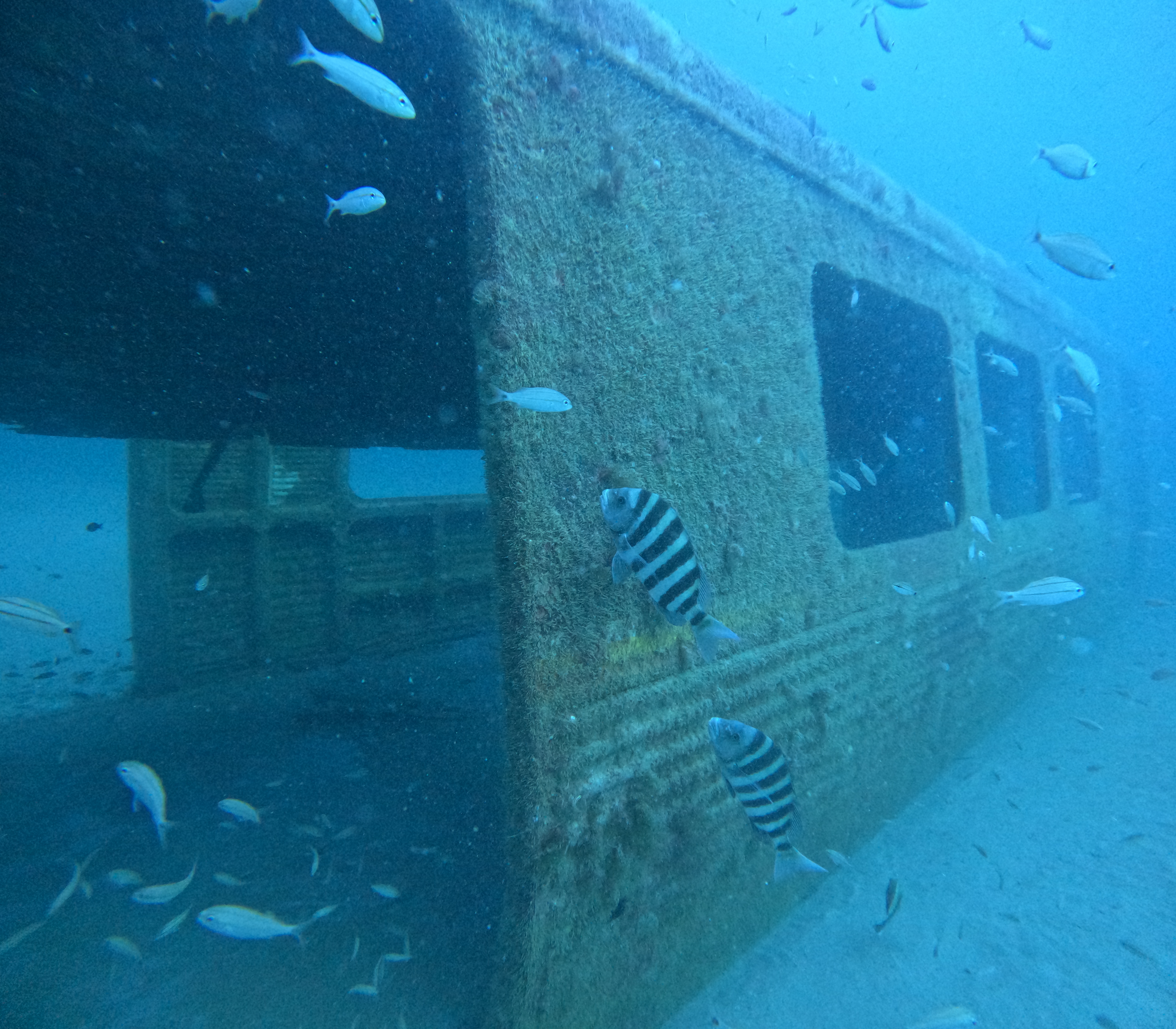No Longer Full of Commuters, Atlanta’s Old Subway Cars Are Now Filled With Fish
Two Metropolitan Atlanta Rapid Transit Authority railcars were added to an artificial reef off the coast of Georgia to create more wildlife habitat

For years, two subway cars were filled with commuters, families and other riders trying to get around Atlanta. Today, they’re filled with fish.
The retired railcars are now getting a second life at the bottom of the Atlantic Ocean, where they’re providing habitat for fish and other marine creatures.
“The artificial reef is looking great, and we are encouraged by the amount of coral growth and marine wildlife activity,” says Cameron Brinton, a marine biologist with the Georgia Department of Natural Resources Coastal Resources Division, in a statement.
Georgia’s Coastal Resources Division has been building and improving artificial reefs meant to support fisheries and create wildlife habitat for more than four decades. On the seafloor along the state’s coast, expanses of sand and shells stretch for tens of miles offshore—a habitat that’s not well-suited for reef growth. Instead, fish can spawn and take shelter among bridge supports, sunken ships, concrete rubble and other man-made objects as part of the effort. And now, some of Atlanta’s decommissioned railcars have been added to the mix.
“This seemed like a real, tangible thing we could do to promote sustainability,” Thomas Worthy, former chairman of the Metropolitan Atlanta Rapid Transit Authority (MARTA) Board of Directors, said in a statement last year. He added that creating the reef is also an “ideal” method for railcar disposal.
In December, the Coastal Resources Division and MARTA worked to remove all hazardous materials and potential contaminants from the decommissioned railcars. They selected deployment locations that would be accessible to anglers without damaging any natural habitat or creating a threat to passing ships, as Brinton told Georgia Public Broadcasting earlier this year.
After an inspection by the U.S. Coast Guard, the two agencies loaded the 72-foot-long railcars onto a barge and transported them to a site known as “L Reef,” located about 23 nautical miles from Georgia’s Ossabaw Island. Once they arrived, they gently pushed the 55,000-pound cars off the barge and into the water, where they sank to the seafloor.
L Reef spans roughly four square miles and is located 55 to 65 feet below the ocean’s surface. It’s an underwater neighborhood for wildlife established in 1976 that’s also home to New York City subway cars, barges, tugboats and U.S. Army M-60 battle tanks, plus 1,000 tons of concrete culvert pipe.
Last month, divers checked on the Atlanta railcars for the first time and shared an update on their progress. They counted at least nine species of game fish and saw soft coral starting to grow. One of the railcar roofs had collapsed, which Brinton says in the statement is “typical,” as the man-made structures “become part of the essential marine habitat for sea creatures.”
The reefs also attract humans, in the form of recreational anglers and divers: “The first time I dove them, I couldn’t believe how beautiful these reefs were,” says Daniel Gleason, a marine ecologist at Georgia Southern University, to Atlanta Magazine’s Gillian Neimark. “The diversity rivals natural coral reefs.”
Up to six additional Atlanta subway cars are on tap to be added to the artificial reef in the future.
The city is in the process of rolling out 254 new railcars. Its old, decommissioned cars are often sold for scrap, but the city is “proud” to be repurposing at least some of them in this “environmentally responsible way” instead, says Collie Greenwood, chief executive officer and general manager of MARTA, in the statement.
“We hope to provide more retired railcars for reef deployment as we make room for our new trains,” he adds.
/https://tf-cmsv2-smithsonianmag-media.s3.amazonaws.com/accounts/headshot/SarahKuta.png)
/https://tf-cmsv2-smithsonianmag-media.s3.amazonaws.com/accounts/headshot/SarahKuta.png)